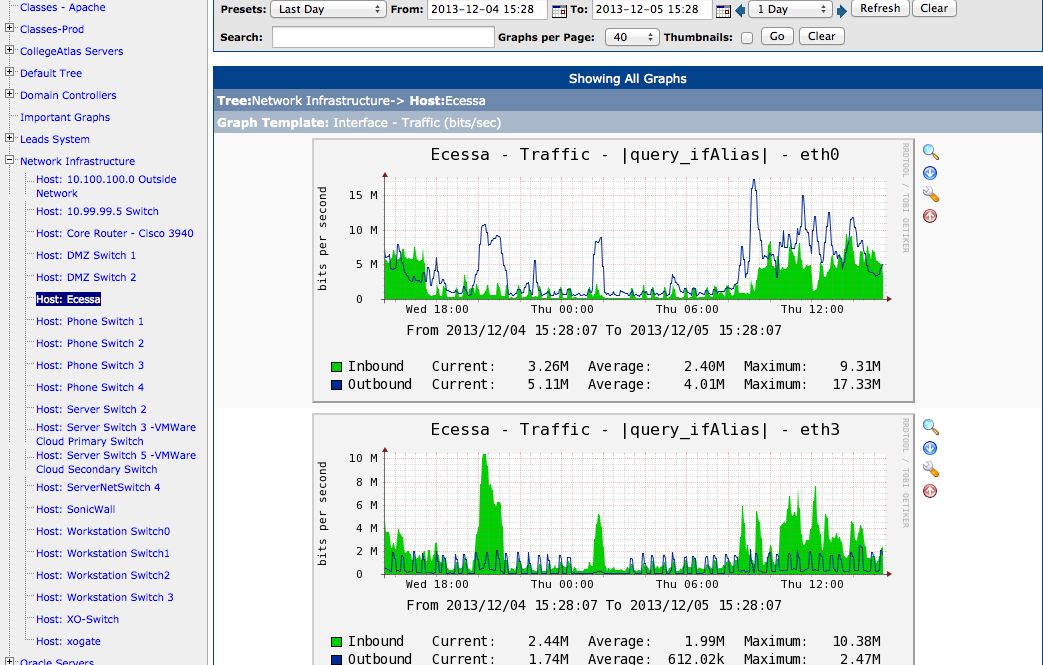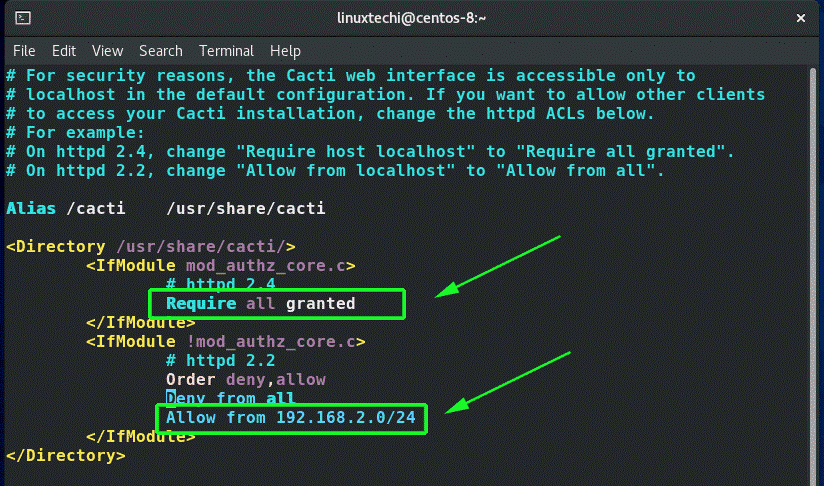

- #How to install cacti on centos how to#
- #How to install cacti on centos update#
- #How to install cacti on centos password#
- #How to install cacti on centos license#
When the Template Setup screen appears, make sure all templates are selected.Chose your preferred options and hit Next.Check the box at the bottom and hit Next.Select the installation type and hit Next.
#How to install cacti on centos license#
#How to install cacti on centos password#

Now grant database access to MySQL timezone: $ sudo mysql mysql /dev/null 2>&1 Then use the command below to apply the changes you have made and then exit the MySQL prompt: $ flush privileges Then create a user named " cactiuser" with the password "123cacti" for Cacti: $ GRANT ALL ON cacti_db.* TO IDENTIFIED BY '123cacti' Enter into MariaDB server prompt using the command below: $ sudo mysqlĬreate database named " cacti_db" using the command below: $ create database cacti_db Next, we will create a database and a user for Cacti. Now restart MariaDB using the command below: $ sudo systemctl restart mariadb Use the below command to edit the default configuration file of MariaDB server in Nano editor: $ sudo nano /etc/mysql//50-server.cnfĪdd the below lines in this file: collation-server = utf8mb4_unicode_ci The database server used by Cacti is MariaDB. Then open another php.ini file: $ sudo nano /etc/php/7.4/cli/php.iniĪs you have done the changes, so now restart the Apache service: $ sudo systemctl restart apache2 Next, you are required to do is to open the php.ini file in a text editor using the command below: $ sudo nano /etc/php/7.4/apache2/php.iniįind and change the values of these lines: memory_limit = 512M Use this command to install it: $ sudo apt install mariadb-server php php-mysql apache2 libapache2-mod-php php-xml php-mbstring php-gmp php-ldap php-gd -y Then use this command for installing the prerequisites: $ sudo apt install unzip rrdtool git snmp php-snmp librrds-perl curl gnupg2 -yĬacti also requires LAMP stack to be installed on your system.
#How to install cacti on centos update#
Now, Execute the command below to update the repository index: $ sudo apt update -y To begin, we will update the repository index and then install some prerequisite packages. Steps to install Cacti on Ubuntu Linux System In this context, we shall look into the best procedure for installing Cacti on Ubuntu 20.04 LTS.
#How to install cacti on centos how to#
Here at LinuxAPT, as part of our Server Management Services, we regularly help our Customers to perform related System Monitoring Software on your Linux based server.įor more information about how to add and manage your devices, visit Cacti’s official documentation. Additionally, it helps operations teams to intervene in a timely manner and resolve issues in case something goes wrong.

It is mainly used to get CPU load and network bandwidth utilization in a graph format.Ĭontinuous monitoring keeps a tab on the health of IT systems and checks if all the components are running normally. It mostly uses SNMP for gathering information. It collects and stores performance information to create graphs. Cacti is a network graphing solution based on RRDtool's framework.


 0 kommentar(er)
0 kommentar(er)
